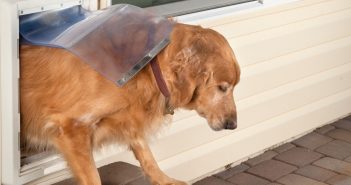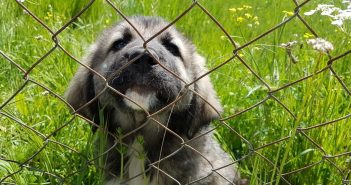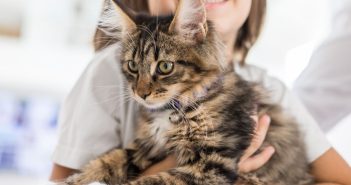Due to pet overpopulation, responsible pet owners usually have their pets spayed or neutered. However, for those who have decided to breed their pet, or whose female pet may have accidentally bred with an unneutered male, it is a good idea to become familiar with the signs of pregnancy. Learning about what will happen when your pet gives birth will also help you recognize complications that could arise during labor. If you are planning to breed your pet, visit your veterinarian before breeding takes place to make sure that the animal is free from parasites, up to date on vaccinations, and in good physical health.
Pregnancy is a huge drain on the physical resources of the mother, so you should also start feeding the mother a food that is high in energy and formulated for growth at least 30 days before labor is expected.
The gestation period for cats and dogs is around 60 to 65 days. Pets that have previously gone into heat regularly will stop this cycle during pregnancy, and you may notice that your pet is developing a distended abdomen. If your pet has gotten pregnant accidentally, it is perfectly safe to have your veterinarian spay her in order to terminate the pregnancy. This procedure is a safe and effective way of preventing the unwanted young from being born and of ensuring that accidental pregnancy will not occur again. The sooner you realize that your pet is pregnant, the easier and safer this procedure is.
Pregnancy may cause some behavioral changes in your pet. She may have a significant increase in appetite and may become more protective of her environment. She may also begin to look for an appropriate place for the birth to take place. This behavior is called nesting.
The actual birth is called whelping for dogs and queening for cats. In preparation, you should designate an area for the birth at least 30 days in advance. Choose a clean, quiet area away from people and other animals. The area should be easy to clean up as well. Setting up the area in advance will reduce your pet’s stress level when labor occurs by giving her some time to become comfortable with her surroundings.
When your pet gets close to the delivery date, you should be on the lookout for signs of labor. These signs will include an increase in nesting behavior and a decrease in body temperature. Your pet will also start to produce milk and may stop eating just before labor begins. Labor itself can last anywhere from 2 to 36 hours, and your pet may give birth to one baby and then wait for up to 24 hours before delivering another. While you should watch for signs of straining, periods of rest between each birth is normal and there is no need for alarm.
Although labor usually goes smoothly and does not require any human intervention, you will need to keep an eye out for problems. If you notice that your pet is actively pushing and straining for more than 15 minutes with no result, or if you can see a baby positioned horizontally in the birth canal, there may be a problem. This type of situation should be considered a medical emergency, and you should take your pet to see a veterinarian immediately.
After labor has occurred, the mother will instinctively clean the babies of any blood and amniotic material. There can often be quite a bit of this material left after the birth and the mother will frequently eat it in order to dispose of it. While this is a normal behavior and may serve to hide evidence of the birth from predators in the wild, the amniotic material can sometimes cause gastrointestinal obstructions, so it may be wise to take it away after labor, if possible.
To ensure that all is well, you should take the mother and all of the babies to see your veterinarian within 36 hours after the birth. This is to make sure that the mother’s uterus has contracted to its normal size and there is no abnormal discharge. The veterinarian can also make sure that there is milk and that the babies are normal and healthy.
If you have a pregnant animal, take some time to prepare for the birth and be able recognize the signs of possible complications that can occur during labor. If you watch carefully and take the recommended precautions, you can ensure that mother and babies will be healthy and happy.

1 flea control



